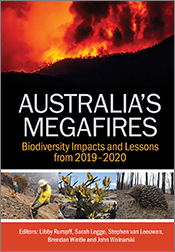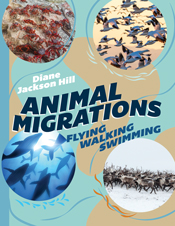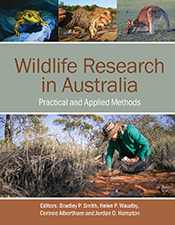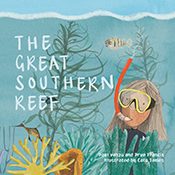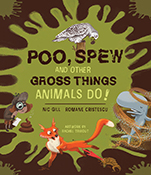Rays of the World
Edited by: Peter R Last, William T White, Marcelo R de Carvalho, Bernard Séret, Matthias FW Stehmann, Gavin JP Naylor
The first illustrated guide to the over 630 known species of rays found on the planet.
Rays are among the largest fishes and evolved from shark-like ancestors nearly 200 million years ago. They share with sharks many life history traits: all species are carnivores or scavengers; all reproduce by internal fertilisation; and all have similar morphological and anatomical characteristics, such as skeletons built of cartilage. Rays of the World is the first complete pictorial atlas of the world’s ray fauna and includes information on many species only recently discovered by scientists while undertaking research for the book. It includes all 26 families and 633 valid named species of rays, but additional undescribed species exist for many groups. + Full description
Rays of the World features a unique collection of paintings of all living species by Australian natural history artist Lindsay Marshall, compiled as part of a multinational research initiative, the Chondrichthyan Tree of Life Project. Images sourced from around the planet were used by the artist to illustrate the fauna. This comprehensive overview of the world’s ray fauna summarises information such as general identifying features and distributional information about these iconic, but surprisingly poorly known, fishes. It will enable readers to gain a better understanding of the rich diversity of rays and promote wider public interest in the group.
Rays of the World is an ideal reference for a wide range of readers, including conservationists, fishery managers, scientists, fishers, divers, students and book collectors.
- Short descriptionNews
This title is no longer available in print format in Australia and New Zealand, but can still be purchased as an eBook. For customers outside of Australia and New Zealand, this title is available in print format from Cornell University Press.
Listen to Dr Peter Last talk with Fran Kelly on Radio National Breakfast about the project.Reviews
"At 790 pages long there is plenty of information covered in this book, not only for scientists but anyone with an interest in ray fauna... I really do hope a volume such as this promotes a new found sense of wonder for budding future naturalists. It certainly has reminded me of the value in taxonomy and the overwhelming sense of wonder and excitement that the natural world provides, a sentiment that needs to be re-ignited globally."
Ryan Baring, AMSA Bulletin, February 2017
"A tremendous effort and the editors and illustrator should be commended. This is a must have book for anyone with an interest in chondrichthyans, and should find a place in the libraries of any serious ichthyologist."
David A. Ebert, The Quarterly Review of Biology 92, September 2017
"Another big, beautiful masterpiece from Australia's CSIRO Publishing... Covering everything from sawfish to devil rays, the book has first rate indices and an excellent bibliography that encourage further research. For anyone professionally or even just intellectually interested in fish and the sea... Brilliant!"
Ausmarine, December 2016
Work Boat World, January 2017
"The editors of Rays of the World state in their foreword that it was early 1984 that discussions were held regarding the production of such a volume, The wait has been worth it... Rays of the World fills a gap in the identification of the world's rays and is an excellent reference book."
Dr Rob Jones, Australian Veterinary Journal 95(2), July 2017
Details
ePDF | December 2016ISBN: 9780643109148
Publisher: CSIRO Publishing
Available from eRetailers
ePUB | December 2016
ISBN: 9780643109155
Publisher: CSIRO Publishing
Available from eRetailers
Features
- Identification of rays
- Facts about rays
- Colour paintings by renowned artist Lindsay Marshall
- The Supplementary Paper PDF contains three supplementary papers that contain important taxonomic and nomenclatural decisions that underpin Rays of the World. They follow a sequence of papers published in the journal Zootaxa where 25 new ray species have been recently described.
Contents
ForewordAcknowledgements
Introduction
Phylogeny and classification of rays
Human interactions
Ray conservation
About this book
Glossary
Key to families of living rays
PRISTIDAE (Sawfishes)
RHINIDAE (Wedgefishes)
RHINOBATIDAE (Guitarfishes)
GLAUCOSTEGIDAE (Giant guitarfishes)
TRYGONORRHINIDAE (Banjo rays)
PLATYRHINIDAE (Fanrays)
ZANOBATIDAE (Panrays)
NARCINIDAE (Numbfishes)
NARKIDAE (Sleeper rays)
HYPNIDAE (Coffin rays)
TORPEDINIDAE (Torpedo rays)
RAJIDAE (Skates)
ARHYNCHOBATIDAE (Softnose skates)
GURGESIELLIDAE (Pygmy skates)
ANACANTHOBATIDAE (Legskates)
HEXATRYGONIDAE (Sixgill stingrays)
GYMNURIDAE (Butterfly rays)
DASYATIDAE (Stingrays)
POTAMOTRYGONIDAE (Neotropical stingrays)
UROTRYGONIDAE (Round rays)
PLESIOBATIDAE (Giant stingarees)
UROLOPHIDAE (Stingarees)
MYLIOBATIDAE (Eagle rays)
AETOBATIDAE (Pelagic eagle rays)
RHINOPTERIDAE (Cownose rays)
MOBULIDAE (Devilrays)
Suggested reading
Checklist of the world’s rays
Scientific names index
Common names index
Authors
Peter R. Last is a senior principal research scientist with CSIRO National Research Collections and former head of the Australian National Fish Collection, Hobart, Tasmania.
William T. White is an ichthyologist and the senior curator at CSIRO’s Australian National Fish Collection.
Marcelo R. de Carvalho is a professor in the Department of Zoology at the University of São Paulo. He is also a Research Associate of the Department of Ichthyology at the American Museum of Natural History.
Bernard Séret is a consultant ichthyologist and international authority on sharks and rays, formerly at the National Museum of Natural History in Paris.
Matthias F. W. Stehmann is a retired ichthyologist at the Zoological Museum of Hamburg.
Gavin J. P. Naylor is a molecular biologist and professor of biology at the College of Charleston.
The artist, Lindsay Marshall, a respected scientific illustrator with a doctorate specialising in shark morphology, understands the need for technical excellence and authenticity in natural history art.




